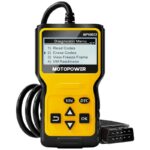Understanding Parameter IDs for Vehicle Diagnostics
OBD2, or On-Board Diagnostics, is a standardized system that allows you to access your vehicle’s diagnostic data. A key component of this system is the Parameter ID, or PID. But in OBD2, what does PID mean, and why is it important? This article will break down the role of PIDs in OBD2, explaining how they work and how they are used for troubleshooting and vehicle monitoring.
What is a PID in OBD2?
A PID is a unique code that identifies a specific parameter or data point within your vehicle’s system. Think of it as a request code for specific information. When an OBD2 scanner sends a request to the vehicle’s computer using a specific PID, the computer responds with the corresponding data. Each PID corresponds to a specific piece of information, such as engine speed (RPM), vehicle speed, coolant temperature, fuel level, and many more.
How PIDs Work
OBD2 communication relies on a request-response model. The OBD2 scanner initiates a request using a specific PID, and the vehicle’s ECU (Engine Control Unit) responds with the requested data. This communication happens over a specific protocol, most commonly CAN bus (Controller Area Network). The PID is part of the request message sent over this network. The message structure typically includes:
- Mode: A service identifier defining the type of request (e.g., Mode 0x01 for current data).
- PID: The specific parameter being requested.
- Data Bytes: The actual data values returned by the ECU.
Why are PIDs Important?
PIDs are crucial for diagnostics and vehicle monitoring because they provide a standardized way to access specific data points. This allows mechanics and vehicle owners to:
- Diagnose Problems: By reading the data associated with specific PIDs, mechanics can identify the root cause of malfunctions or check engine lights. For instance, reading the PID for oxygen sensor voltage can help diagnose a faulty sensor.
- Monitor Performance: PIDs enable real-time monitoring of critical vehicle parameters like engine performance, fuel efficiency, and emissions.
- Customize Tuning: For performance enthusiasts, accessing PIDs allows for fine-tuning engine parameters and optimizing vehicle performance.
Standard and Manufacturer-Specific PIDs
While there are standardized PIDs defined by SAE (Society of Automotive Engineers), manufacturers can also implement their own specific PIDs. Standard PIDs cover common parameters across different vehicle makes and models. Manufacturer-specific PIDs provide access to data points unique to a particular brand or model.
Finding PID Information
Information about standardized OBD2 PIDs can be found in documentation from SAE (J1979) and ISO (15031-5). You can also find comprehensive OBD2 PID lists and decoding information online. For manufacturer-specific PIDs, you might need to consult the vehicle’s service manual or specialized diagnostic software.
Decoding PID Data
The data returned by the ECU in response to a PID request is often encoded and requires decoding to be human-readable. This involves applying specific formulas or lookup tables defined in the OBD2 standards or manufacturer documentation. OBD2 software and scanners typically handle this decoding automatically.
Conclusion
Understanding what PID means in OBD2 is essential for anyone working with vehicle diagnostics. PIDs are the key to unlocking valuable data about your vehicle’s health and performance. By using the right tools and resources, you can leverage this data for troubleshooting, monitoring, and optimizing your vehicle.

